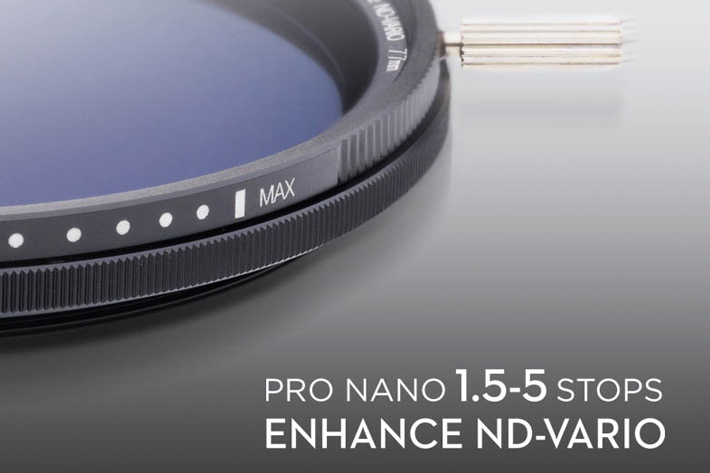
As any other ND-Vario filter available, the NiSi filter offers a variation in neutral density by rotating two polarizers, one over the other, in this case reaching a maximum of 5 stops. Videographers may be interested in the solution.
NiSi presents its new filter, the NiSi Pro Nano 1.5-5 Stops Enhance ND-VARIO, noting that “to date, most photographers have had bad experiences using variable ND filters. Despite their high cost, image quality has often not met photographers’ demands” and points as one of the reasons the appearance of an X effect when the filter is rotated to its extreme.
https://youtu.be/elZ9VNcR_3c
While I understand marketing has to say these things, it would probably be better if they didn’t. In fact, the “X” Effect, as NiSi calls it, is a constant in variable ND filters, and as far as I know it is something users learn to live with, when using these filters. I’ve used variable ND filters, I still have them, and the usual solution is simple: you try the filter to find out where the two rotating polarizers introduce the X in the middle of the image (immediately visible with wide-angle lenses) and once aware of the exact point where the effect creeps in… either mark that point on the filter, or memorize it, so you know that’s the point where you’ve to stop. It works perfectly, meaning, all variable ND filters work the same way.
Having clarified this aspect, there are other reasons why you may want to look at NiSi’s filter: its “image definition” and “color cast”, which lead us to things photographers and videographers either hate to lose or have. In fact, some – mostly cheap – filters show a lack of definition and /or introduce a color cast. NiSi claims its filter does work well around those problems and while it would be necessary to try the filter to confirm it is true, it is not hard to believe the NiSi Pro Nano 1.5-5 Stops Enhance ND-VARIO will behave as promised.
When the first variable neutral density filters reached the market, photographers and videographers didn’t like them because of the problems mentioned above. The industry, though, has reached a stage where these two things – no perceptible reduction in image definition and no color cast” are almost taken for granted, and the competition due to the fact that there are multiple popular brands available to choose from guarantees users will, especially if not going for the cheap end of the spectrum, receive a filter that works as promised.
The NiSi Pro Nano 1.5-5 Stops Enhance ND-VARIO is available in 67, 72, 77, 82 and 95mm, with a price ranging from $139 to $199. With a slim frame, essential for reducing vignetting, especially with full-frame sensors, the filter also offers a trendy “nano coating”.
While there are other solutions when you need to use different neutral density values – one of them being the Manfrotto Xume adapters – variable ND filters, especially if they work as promised, can be an interesting option for photographers and are something videographers should seriously consider, because they allow a degree of control not achievable simply by playing with aperture and shutter speed.
In the case of video, where the aperture is mostly the only variable, the fact that the degree of density is easily controlled by rotating the knob can be a game changer. As the transition of density occurs smoothly, combined adjustments of aperture and the filter density allow fine adjustments of depth of field while retaining the designated frame rate. In that aspect, the fact that this filter only offers a maximum of 5 stops is probably a positive thing, as most scenes will fall within those values – 1,5 to 5 ND variation.
